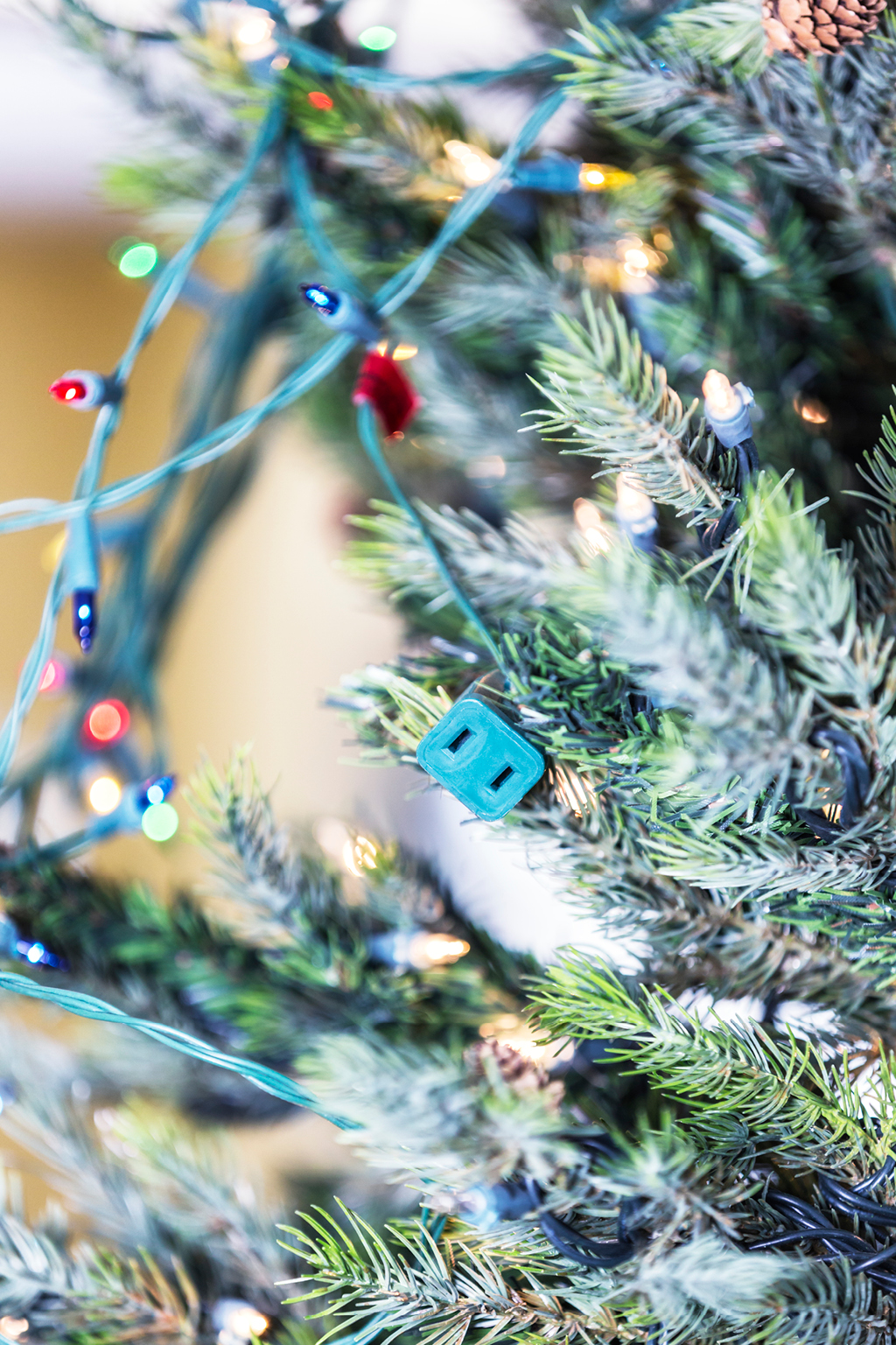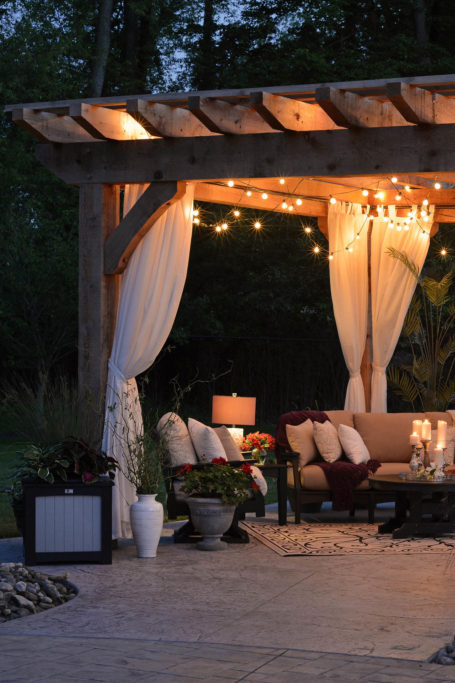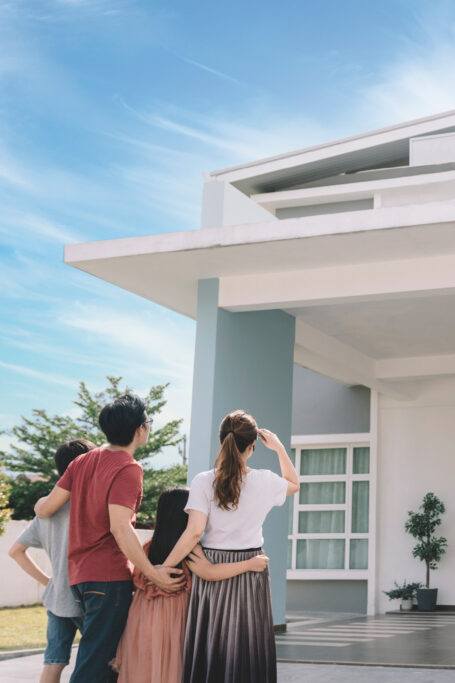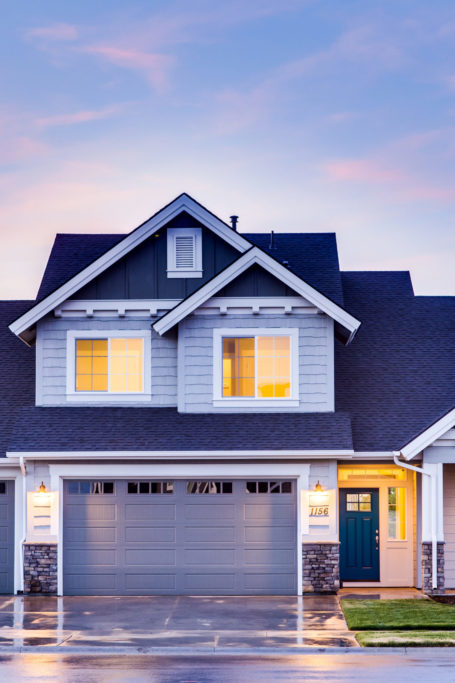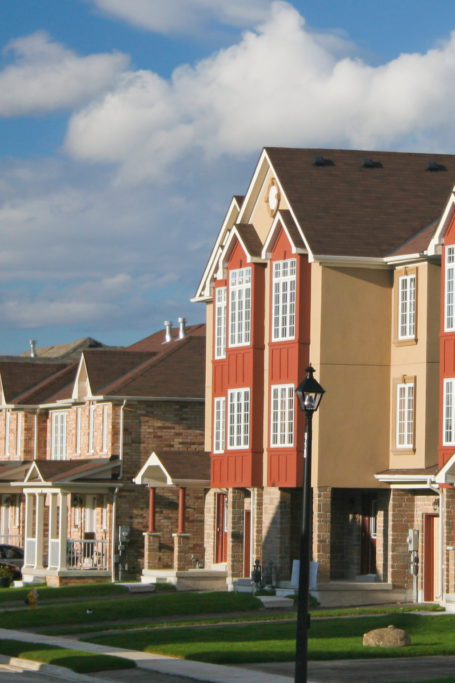Up on the Treetop
During the holidays, everyone loves seeing twinkling lights on homes and trees. And, while decking the indoor tree with lights has always been the primary focus, more and more people are lighting up their outdoor trees as well.

But this can be a tricky and potentially dangerous endeavor, especially if you attempt to decorate a tree that’s taller than your house. Tyler Altenburger, the arborist manager at Longwood Gardens in Kennett Square, Pennsylvania, understands this challenge. Every year for the holidays, he and his team install over a half-million outdoor lights on approximately 150 outdoor trees, some reaching ninety feet high.
Here are some of the safety measures he recommends for making your yard’s tall trees festive.
Sidestep the stepladder
Your go-to tool for this task may be your trusty ladder. Not so fast, says Altenburger. “We actually don’t use ladders as much as people think,” he admits. “The unsteadiness of ladders is a major reason for that.”
Altenburger notes that when his team does utilize ladders, they opt for orchard tripods, which have two legs on one side and a single leg on the opposite side. “They make it easier to get around trees, and they’re a bit more stable than your typical four-footed type,” he explains.
If you opt to use a standard ladder, he recommends a fiberglass version, which he says is worth the higher cost because it’s safer. And, of course, use caution: follow the instructions on the ladder, always face the steps, and have someone spot you at the foot of the ladder to make sure it doesn’t tip sideways.
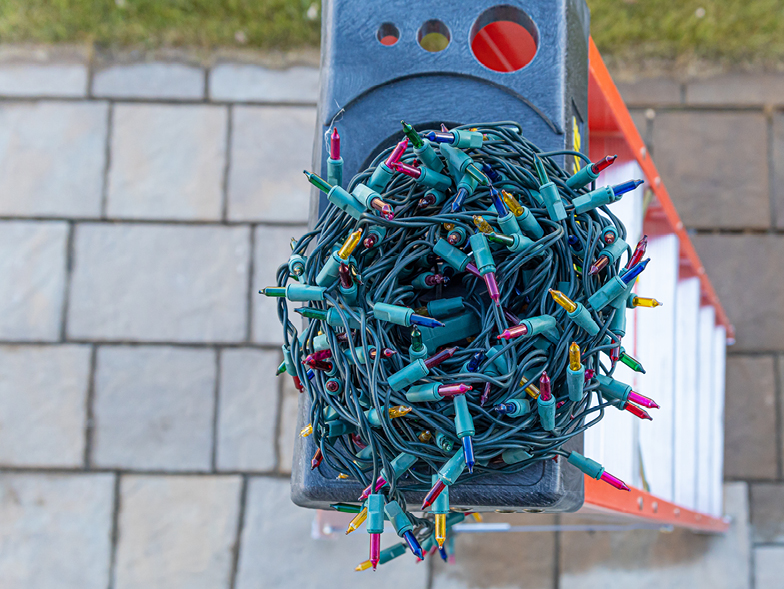
Lighting the trees
Since most of Longwood’s trees are decorated yearly, Altenburg’s team uses a time-saving step that residential tree-decorators can also add to their arsenal. “When we remove the lights, we mark the branches with twine so the same limbs get wrapped every year,” he shares. “For really large trees, though, two climbers go through the tree and start eyeballing which limbs should get lit, and sometimes a person on the ground helps. Then we’ll come back with a full team and start lighting.”
Speaking of lighting, Altenburger suggests wrapping from outside in and from the treetop to the bottom. “Start with the female plug at the end of a branch tip, and work your way in toward the trunk; this way, the male plugs end up at the trunk, where you can then run an extension cord with outlets placed every five to eight feet or so. You’ll have all the power coming from the center and a cleaner display,” he says.
If ascending a tree isn’t feasible, a tried-and-true trick may do the job: “My parents and I used to simply drape lights on trees with a long pipe with a stick attached to the end as a little hook. That worked great,” he says.
Keep them lit
Once your trees are wrapped in lights, you need to make sure the elements don’t short-circuit them. However, Altenburger warns that wrapping the ends in tape can actually do more damage because it tends to seal in moisture. A simple solution? He recommends using childproof outlet caps to prevent blowing fuses.
Stay grounded
All things considered, your best bet may be to seek the help of a professional. “For tall trees, I’d strongly suggest hiring someone who’s trained in climbing unless you can safely reach the top by ladder,” Altenburger advises.
Ultimately, though, people love lighting their own trees. If you do, Longwood’s lead arborist suggests going low. “Everyone’s trying to go bigger,” he concludes. “But there are a lot of good reasons to focus instead on smaller, easier-to-access trees—ornamental trees like dogwoods are more broadly shaped and lower to the ground, so they’re a lot easier access-wise and use fewer lights. Ultimately, it depends on what you want to achieve, but from a safety perspective, smaller and lower is the best way to go.”
